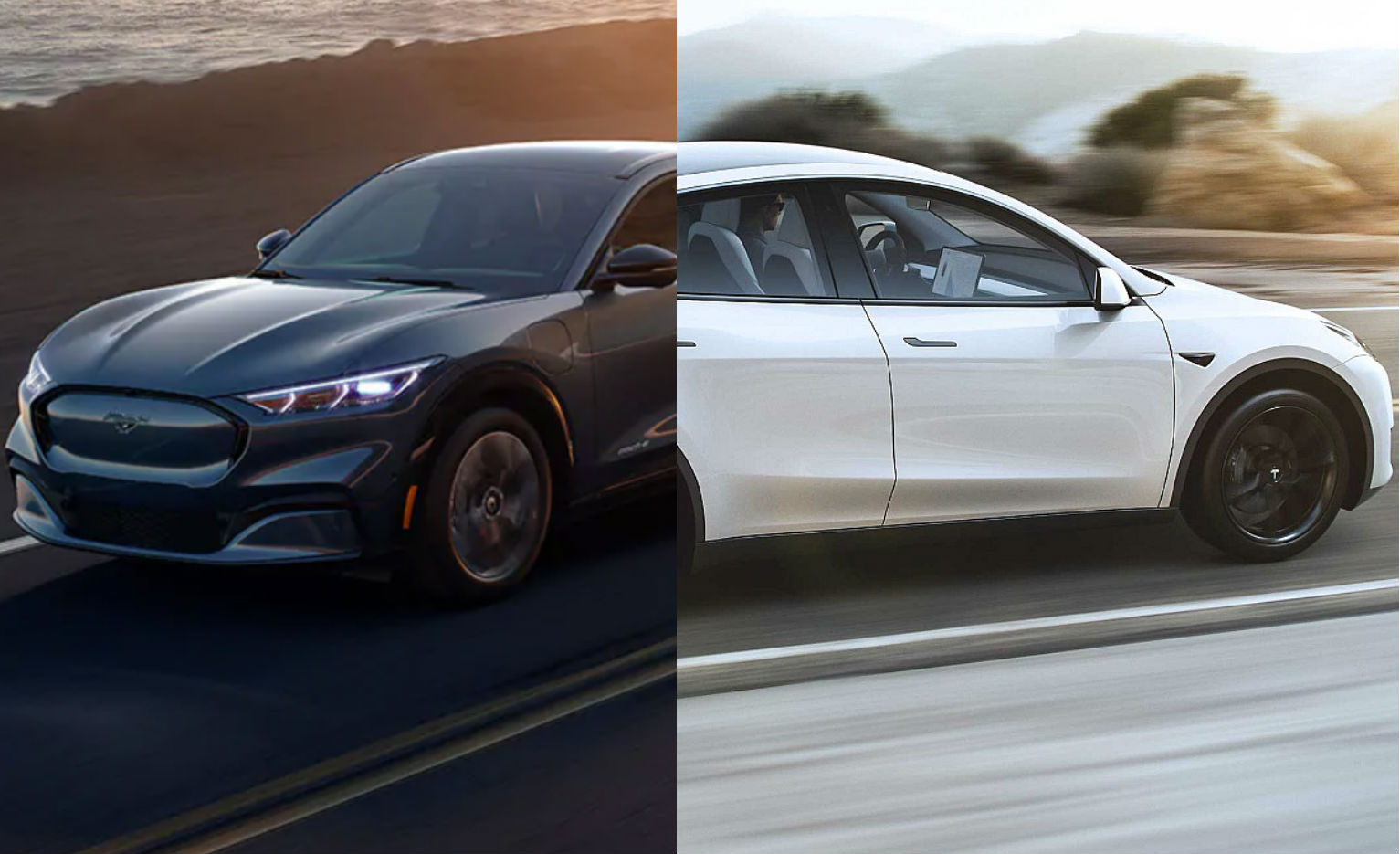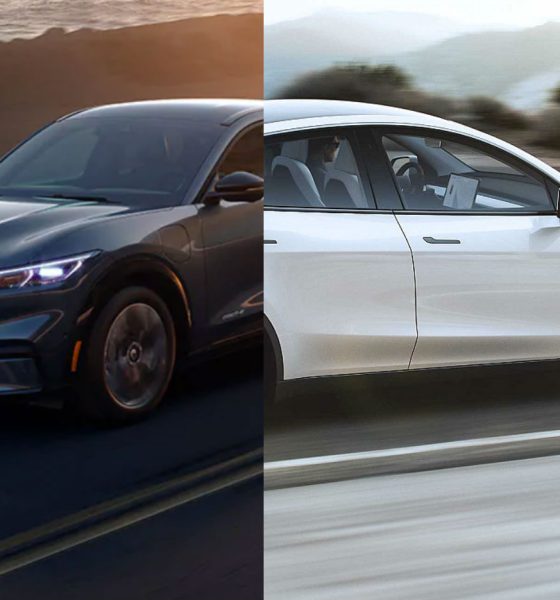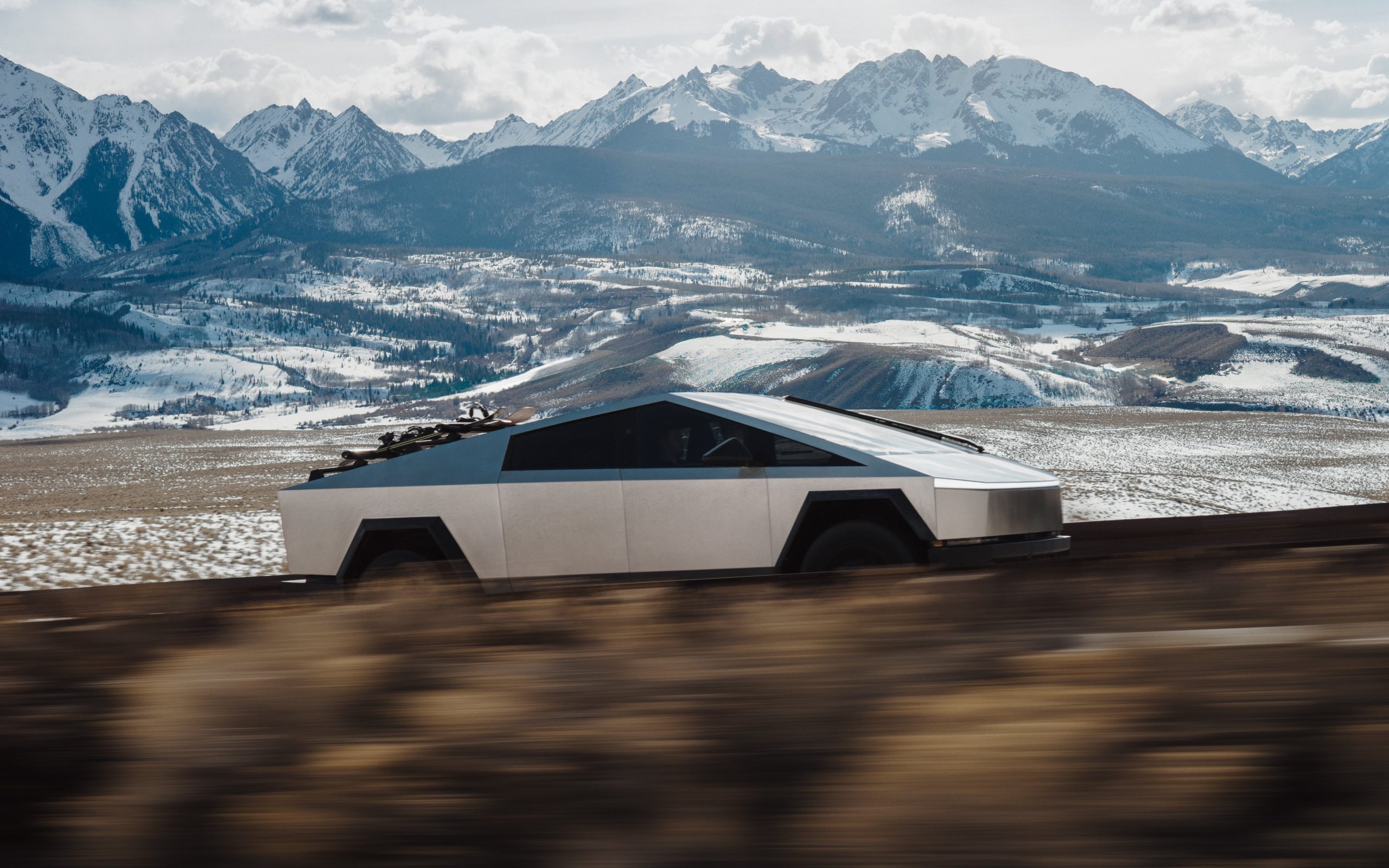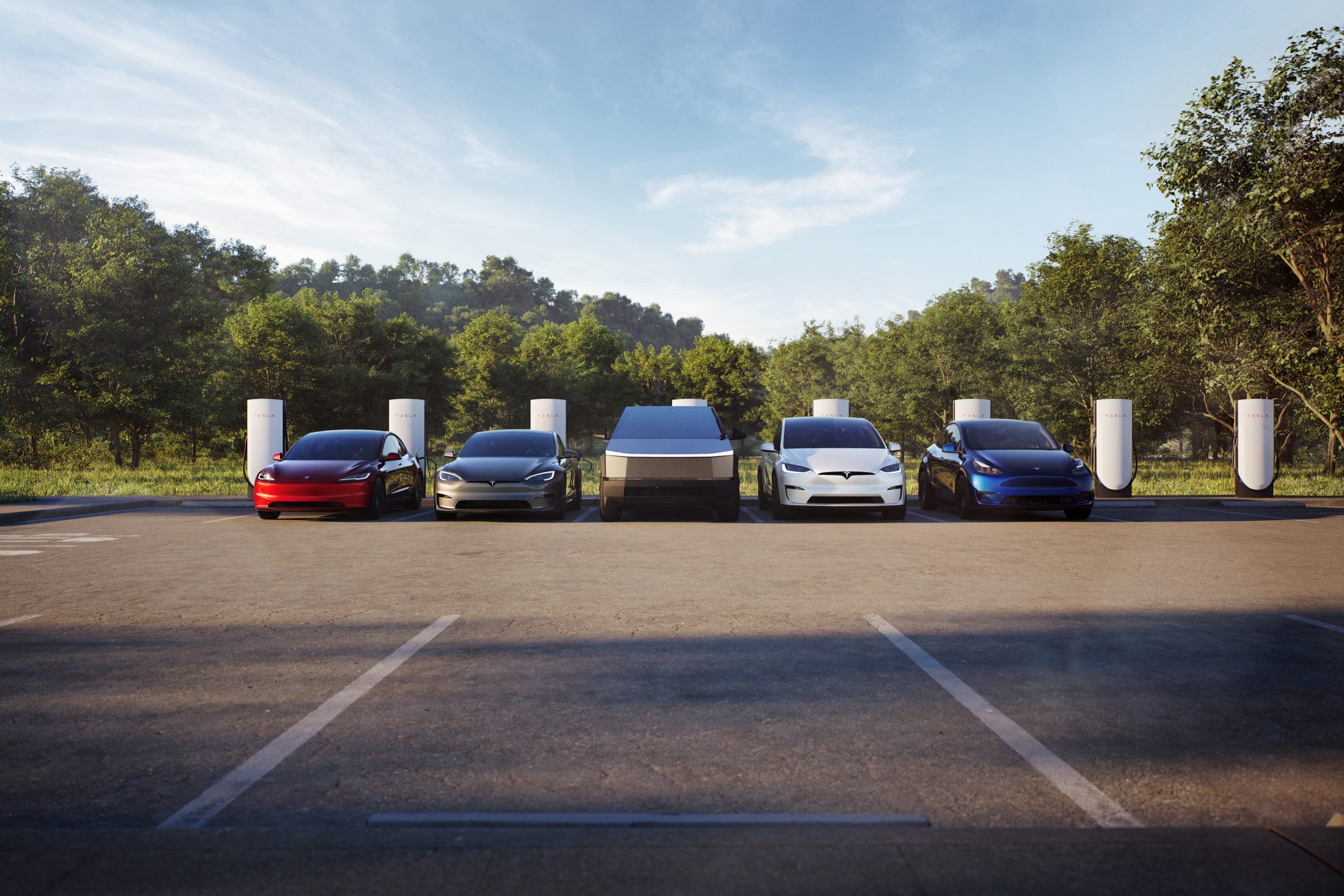

News
Ford’s Mustang Mach E is a valuable Tesla Model Y ally in the crossover segment
With Ford’s release of the Mustang Mach E all-electric crossover, it seems like Tesla is not alone anymore in its efforts at transitioning the mainstream auto market towards sustainability. The Mach E’s combination of price, performance, and range, not only makes it a legitimate and honest effort on Ford’s part, but it also makes the EV a serious threat to mainstream crossover SUVs.
The Ford Mustang Mach E is an all-electric vehicle that will place it in the same segment as the upcoming Tesla Model Y. The two vehicles are priced in pretty much the same ballpark, with the Mach E’s standard range RWD version starting at around $43,900 in comparison to the Standard Range RWD Model Y’s $39,000. That’s a $4,900 difference, but Ford still has the full $7,500 tax credit, which makes the Mach E actually less expensive than the Model Y.
Looking at the price and performance figures of the Mustang Mach E, it is evident that the vehicle is meant to be competitive. The entry-level “Select” variant, for one, will be offered at both RWD and AWD versions, and both will be equipped with a 75.7kWh “standard range” battery pack. The RWD variant will have a range of 230 miles and a 0-60 mph time of about 6-7 seconds, while the AWD version will have a range of 210 miles and be about a second quicker from 0-60. The Mach E Select variants will be shipping in Spring 2021.
Following the Select variants is the “Premium” trim, which starts at $50,600 and ships late 2020, just a few months later than the Model Y’s estimated Summer 2020 release. Premium Mach Es can be equipped with either a standard range pack or an extended range battery, and RWD or AWD. With this, a Premium Mach E could have a range anywhere between 210 miles per charge for the standard range AWD trim, all the way to 300 miles per charge for the extended range with RWD. AWD versions of the Mach E Premium trim can hit 60 mph in the over 5 seconds, while the RWD versions will hit highway speeds in the mid-6s.
While this may seem like a lot of options already, there is still more. The “California Route 1” Mustang Mach E will be arriving in early 2021 for $52,400. This configuration is designed for long travel. As such, it is equipped with an extended range battery pack and 300 miles of range. A “First Edition” Mach E will also be offered in late 2020 with AWD and an extended range battery pack, which gives the vehicle 270 miles of range per charge. Finally, there’s the range-topping Mach E GT, which starts at $60,500, feature AWD, bigger motors, 235 miles of range, and a 0-60 mph time in the mid-3s.
While comparisons to the Model Y will be unavoidable, it should be noted that the Ford Mustang Mach E is every bit more of a traditional crossover rival than it is a competitor for Tesla’s seven-seater. Both vehicles are aimed at the crossover SUV segment, after all, and that is a market that is so vast right now, it is practically impossible for a single automaker to dominate on its own. There is no question that the Model Y will sell in larger numbers than any of Tesla’s other cars — Elon Musk has said as much. But there is also no question that the Mach E, provided that Ford dealers do not nip the market’s enthusiasm in the bud, will be a huge success as well.
This is something that Tesla CEO Elon Musk highlighted in a tweet following Ford’s reveal of the Mach E. While the American automaker was mum about Tesla’s contribution to electric vehicle design and innovation, Musk nevertheless credited the carmaker for its efforts at bringing about sustainable transportation. Ford, at least in its response to Musk, seemed eager to be on board the EV transition.
And this is really the crux of the matter. The Mach E, at least specs-wise, is a serious electric car that is designed for serious users. Its Mustang name may be debated for years to come, but there is little doubt that Ford put a lot of effort into its all-electric crossover, and the results of these are far beyond that of any other legacy automaker so far. It could even be said that with the Mach E in the picture, more expensive, similar-sized all-electric EVs from other veteran automakers such as the Jaguar I-PACE are in for some tough competition. Companies with all-electric cars that are under-utilized and under-promoted like GM and its Chevy Bolt are also at risk of being considered as the final compliance cars of a bygone era.
Ford has played its hand, and it did so with a strong statement in support of all-electric vehicles. With the Mach E, Tesla is no longer alone in the electric assault on the crossover segment. The question now is, will other automakers follow suit with similarly priced and specced vehicles? The next few years will definitely be very interesting.
More information about the Ford Mustang Mach E could be accessed here.

Cybertruck
Tesla Cybertruck earns IIHS Top Safety Pick+ award
To commemorate the accolade, the official Cybertruck account celebrated the milestone on X.

The Tesla Cybertruck has achieved the Insurance Institute for Highway Safety’s (IIHS) highest honor, earning a Top Safety Pick+ rating for 2025 models built after April 2025.
The full-size electric pickup truck’s safety rating is partly due to the vehicle’s strong performance in updated crash tests, superior front crash prevention, and effective headlights, among other factors. To commemorate the accolade, the official Cybertruck account celebrated the milestone on X.
Cybertruck’s IIHS rating
As per the IIHS, beginning with 2025 Cybertruck models built after April 2025, changes were made to the front underbody structure and footwell to improve occupant safety in driver-side and passenger-side small overlap front crashes. The moderate overlap front test earned a good rating, and the updated side impact test also received stellar marks.
The Cybertruck’s front crash prevention earned a good rating in pedestrian scenarios, with the standard Collision Avoidance Assist avoiding collisions in day and night tests across child, adult crossing, and parallel paths. Headlights with high-beam assist compensated for limitations, contributing to the top award.
Safest and most autonomous pickup
The Cybertruck is one of only two full-size pickups to receive the IIHS’ Top Safety Pick + rating. It is also the only one equipped with advanced self-driving features via Tesla’s Full Self-Driving (Supervised) system. Thanks to FSD, the Cybertruck can navigate inner city streets and highways on its own with minimal supervision, adding a layer of safety beyond passive crash protection.
Community reactions poured in, with users praising the vehicle’s safety rating amidst skepticism from critics. Tesla itself highlighted this by starting its X post with a short clip of a Cybertruck critic who predicted that the vehicle will likely not pass safety tests. The only question now is, of course, if the vehicle’s Top Safety Pick+ rating from the IIHS will help the Cybertruck improve its sales.
News
Tesla stands to gain from Ford’s decision to ditch large EVs
Tesla is perhaps the biggest beneficiary of Ford’s decision, especially as it will no longer have to deal with the sole pure EV pickup that outsold it from time to time: the F-150 Lightning.

Ford’s recent decision to abandon production of the all-electric Ford F-150 Lightning after the 2025 model year should yield some advantages for Tesla.
The Detroit-based automaker’s pivot away from large EVs and toward hybrids and extended-range EVs that come with a gas generator is proof that sustainable powertrains are easy on paper, but hard in reality.
Tesla is perhaps the biggest beneficiary of Ford’s decision, especially as it will no longer have to deal with the sole pure EV pickup that outsold it from time to time: the F-150 Lightning.
Here’s why:
Reduced Competition in the Electric Pickup Segment
The F-150 Lightning was the Tesla Cybertruck’s primary and direct rival in the full-size electric pickup market in the United States. With Ford’s decision to end pure EV production of its best-selling truck’s electric version and shifting to hybrids/EREVs, the Cybertruck faces significantly less competition.

Credit: Tesla
This could drive more fleet and retail buyers toward the Cybertruck, especially those committed to fully electric vehicles without a gas generator backup.
Strengthened Market Leadership and Brand Perception in Pure EVs
Ford’s pullback from large EVs–citing unprofitability and lack of demand for EVs of that size–highlights the challenges legacy automakers face in scaling profitable battery-electric vehicles.
Tesla, as the established leader with efficient production and vertical integration, benefits from reinforced perception as the most viable and committed pure EV manufacturer.

Credit: Tesla
This can boost consumer confidence in Tesla’s long-term ecosystem over competitors retreating to hybrids. With Ford making this move, it is totally reasonable that some car buyers could be reluctant to buy from other legacy automakers.
Profitability is a key reason companies build cars; they’re businesses, and they’re there to make money.
However, Ford’s new strategy could plant a seed in the head of some who plan to buy from companies like General Motors, Stellantis, or others, who could have second thoughts. With this backtrack in EVs, other things, like less education on these specific vehicles to technicians, could make repairs more costly and tougher to schedule.
Potential Increases in Market Share for Large EVs
Interestingly, this could play right into the hands of Tesla fans who have been asking for the company to make a larger EV, specifically a full-size SUV.
Customers seeking large, high-capability electric trucks or SUVs could now look to Tesla for its Cybertruck or potentially a future vehicle release, which the company has hinted at on several occasions this year.
With Ford reallocating resources away from large pure EVs and taking a $19.5 billion charge, Tesla stands to capture a larger slice of the remaining demand in this segment without a major U.S. competitor aggressively pursuing it.
News
Ford cancels all-electric F-150 Lightning, announces $19.5 billion in charges
“Rather than spending billions more on large EVs that now have no path to profitability, we are allocating that money into higher returning areas, more trucks and van hybrids, extended range electric vehicles, affordable EVs, and entirely new opportunities like energy storage.”

Ford is canceling the all-electric F-150 Lightning and also announced it would take a $19.5 billion charge as it aims to quickly restructure its strategy regarding electrification efforts, a massive blow for the Detroit-based company that was once one of the most gung-ho on transitioning to EVs.
The announcement comes as the writing on the wall seemed to get bolder and more identifiable. Ford was bleeding money in EVs and, although it had a lot of success with the all-electric Lightning, it is aiming to push its efforts elsewhere.
It will also restructure its entire strategy on EVs, and the Lightning is not the only vehicle getting the boot. The T3 pickup, a long-awaited vehicle that was developed in part of a skunkworks program, is also no longer in the company’s plans.
Instead of continuing on with its large EVs, it will now shift its focus to hybrids and “extended-range EVs,” which will have an onboard gasoline engine to increase traveling distance, according to the Wall Street Journal.
“Ford no longer plans to produce select larger electric vehicles where the business case has eroded due to lower-than-expected demand, high costs, and regulatory changes,” the company said in a statement.
🚨 Ford has announced it is discontinuing production of the F-150 Lightning, as it plans to report a charge of $19.5 billion in special items.
The Lightning will still be produced, but instead with a gas generator that will give it over 700 miles of range.
“Ford no longer… pic.twitter.com/ZttZ66SDHL
— TESLARATI (@Teslarati) December 15, 2025
While unfortunate, especially because the Lightning was a fantastic electric truck, Ford is ultimately a business, and a business needs to make money.
Ford has lost $13 billion on its EV business since 2023, and company executives are more than aware that they gave it plenty of time to flourish.
Andrew Frick, President of Ford, said:
“Rather than spending billions more on large EVs that now have no path to profitability, we are allocating that money into higher returning areas, more trucks and van hybrids, extended range electric vehicles, affordable EVs, and entirely new opportunities like energy storage.”
CEO Jim Farley also commented on the decision:
“Instead of plowing billions into the future knowing these large EVs will never make money, we are pivoting.”
Farley also said that the company now knows enough about the U.S. market “where we have a lot more certainty in this second inning.”








